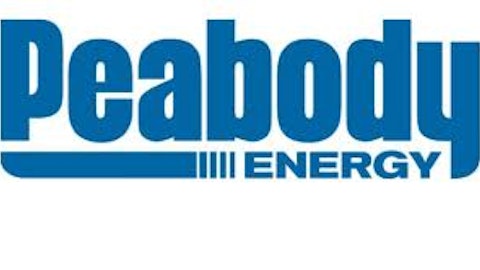3. Valuation
A company may have a good story and plenty of growth opportunities, but if the price isn’t right, it could be a mistake to buy. The price-to-earnings, or P/E, ratio is by the far the most commonly used valuation metric, which is taken by dividing a company’s stock price by its earnings per share over the past four quarters. For a benchmark, the S&P 500 currently has a P/E of 18.5, above the historical average 15.5, which you’ll want to keep in mind as you evaluate companies’ earnings ratios. Generally, faster-growing companies will have higher P/Es. Taking it a step further, the PEG ratio, or price-to-earnings divided by earnings growth, factors in a company’s expected earnings growth rate. Like the P/E ratio, lower values are better. The S&P 500 currently has a PEG of 1.38, so stocks below that figure would seem undervalued based on price and growth metrics. These metrics are available from Yahoo! Finance and other financial news portals.
One winning stock this year with has been Sodastream International Ltd (NASDAQ:SODA), with a PEG of just 0.89, despite a relatively high P/E of 27.8. The maker of countertop soda machines has been an outperformer in part because the market has underestimated its earnings growth, as many analysts believe it to be a fad. This view is clearly reflected in the low PEG valuation, which was down around 0.5 less than a year ago.
4. Leadership
The three preceding factors are the most crucial, but it’s also wise to consider who’s managing the company for you. Businesses are nothing more than the sum of their people and the products they make, and the CEO can sometimes make a world of difference. Plenty of companies have gone astray once their visionary leaders left the C-suite, including Apple Inc. (NASDAQ:AAPL), Microsoft, and Starbucks. Often, a new CEO can turn around a struggling stock, as we’ve seen in Groupon, whose shares have more than doubled, steadily climbing since Eric Lefkofsky replaced Andrew Mason earlier this year.
Take the time to get to know your CEOs. What previous experience and talents do they bring to the job? One of the best ways to get to know your leaders are to listen to recent earnings calls. Do they sound honest, trustworthy, and forthcoming? Do they make questionable excuses for poor performance, such as bad weather or economic weakness? Do they give clear, straightforward answers to analysts’ questions, or do they seem to be withholding information or stonewalling the questioner? You’re entrusting to your money to company CEOs above all others. You should believe that they are competent and trustworthy.
Inside ownership and insider buying are also useful metrics to track, as these will ensure that your managements’ interests are aligned with your own, and insider purchases also serve as an alert to retail investors that management thinks shares are cheap. Insider ownership information is available from the SEC’s Form 14a, which you can find here.
5. Dividends
Dividends and their partner in returning capital, share buybacks, aren’t necessary for a good investment, but they’re key for certain investors. Both indicate a management focused on driving shareholder returns, and dividends provide an income stream to investors that non-dividend stocks can’t, boosting the effective earnings growth rate. In addition, through reinvesting dividends, investors can realize greater returns.
The average dividend yield on the S&P 500 is 2.05%; however, effective yields for investors are often much higher, as companies tend to increase their dividend payouts over time, and share prices generally move up as well. Coca-Cola, for example, has nearly tripled its dividend in the past year. If you’re looking for reliable companies with increasing dividends, look no further than S&P’s list of Dividend Aristocrats, an exclusive club of 54 stocks that have raised their dividend every year for 25 years in a row. The select group includes household names such as Coke and Wal-Mart, but also more obscure companies such as Pentair and PPG Industries. Still, most of these stocks offer dividends near the S&P’s average of just 2%. For juicier payouts, take a look at Real estate investment trusts or master limited partnerships — REITS and MLPs — both of which must pay out at least 90% of earnings directly to shareholders and therefore often have double-digit yields.
And if that’s too much work …
You can always put your money into an index fund such as SPY or IVV, which track the S&P 500, as mutual funds underperform the broad market on average after accounting for fees. With a historical average annual return of 6.7%, after adjusting for inflation, your money will double in 10 years, triple in less than 17, and quadruple in less than 22, and that’s without adding anything to your savings or reinvesting dividends.
The article How to Pick a Stock originally appeared on Fool.com and is written by Jeremy Bowman.
Fool contributor Jeremy Bowman owns shares of Apple, Chipotle Mexican Grill, and SodaStream. The Motley Fool recommends Apple, Chipotle Mexican Grill, Coca-Cola, Google, McDonald’s, Netflix, SodaStream, Tesla Motors, and Yahoo! and owns shares of Apple, Chipotle Mexican Grill, Google, McDonald’s, Microsoft, Netflix, Pentair, SodaStream, and Tesla Motors.
Copyright © 1995 – 2013 The Motley Fool, LLC. All rights reserved. The Motley Fool has a disclosure policy.





